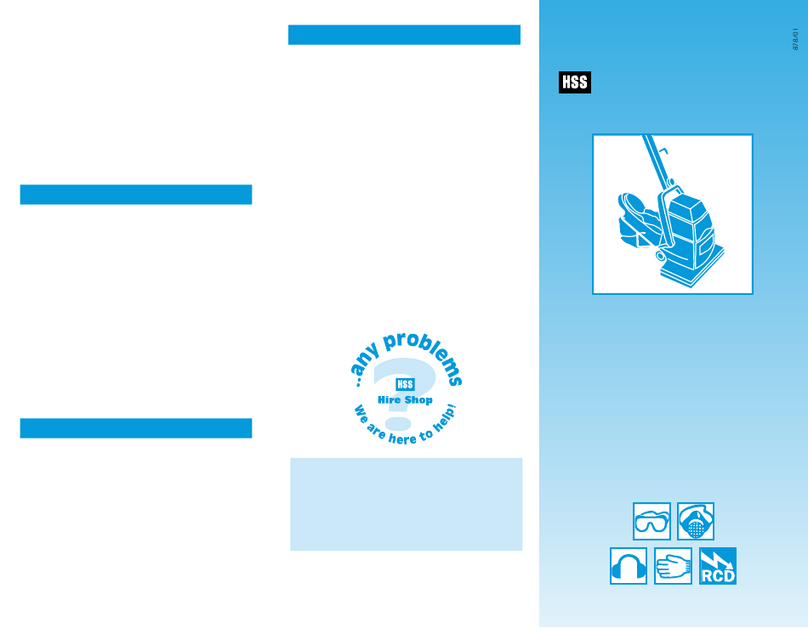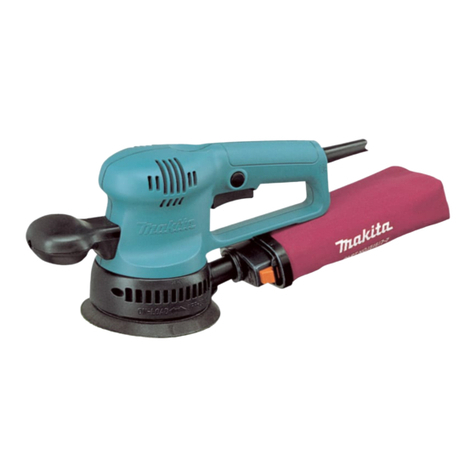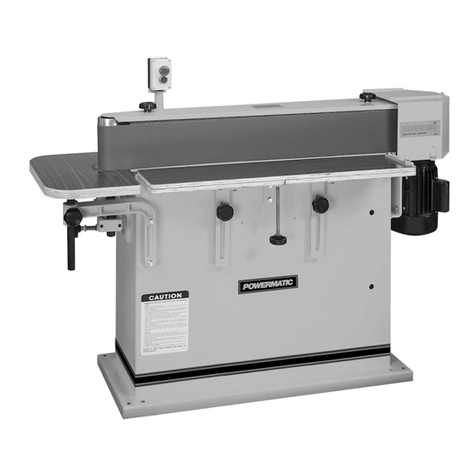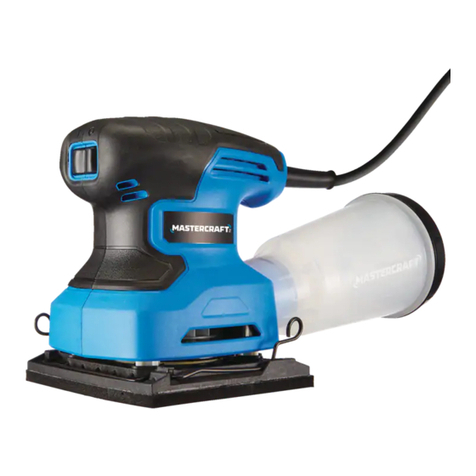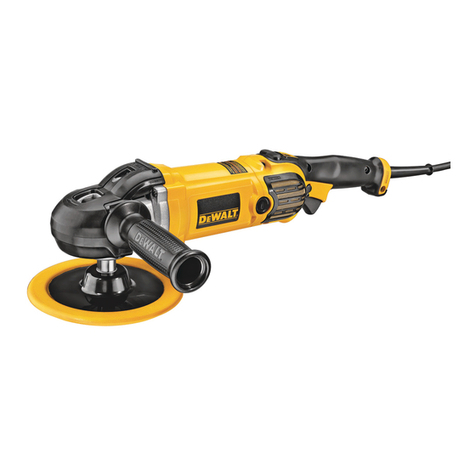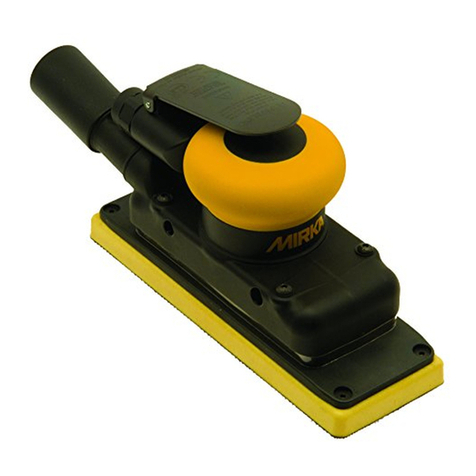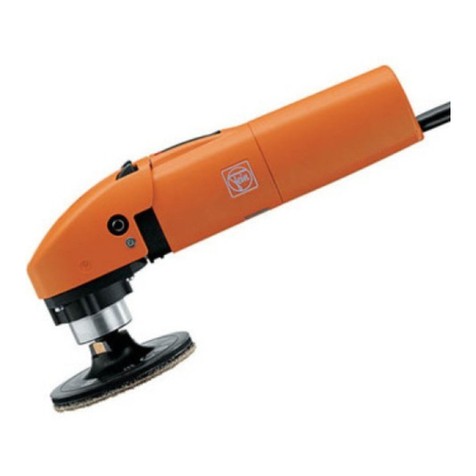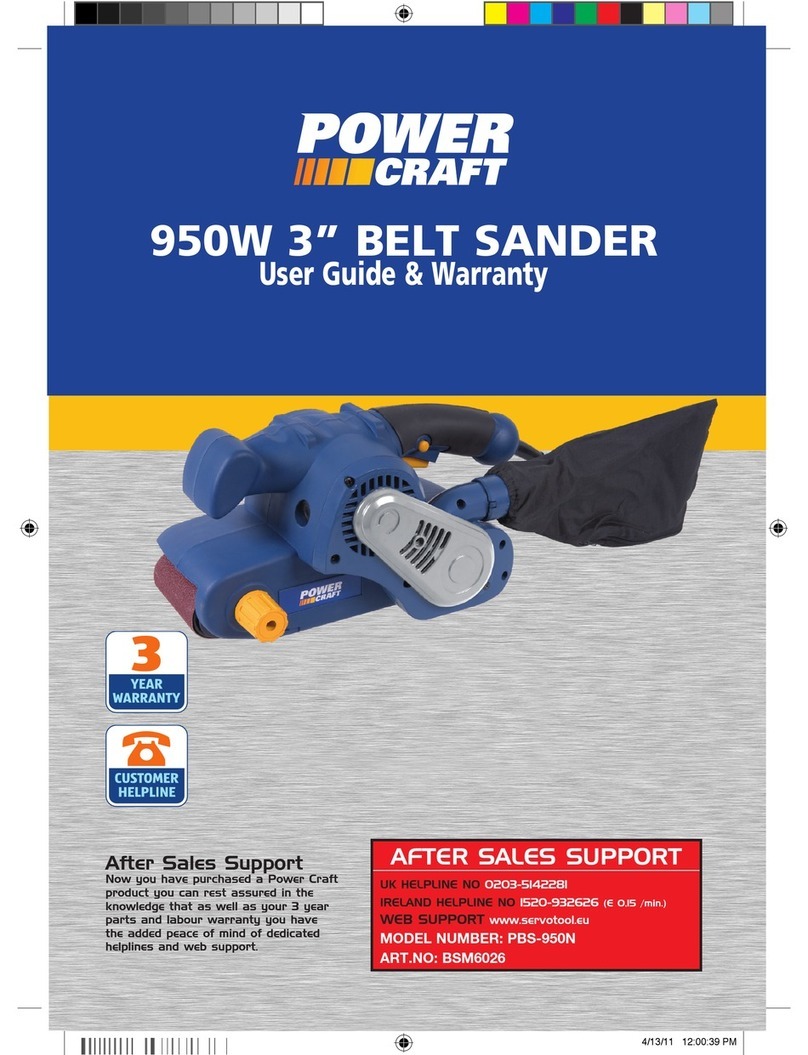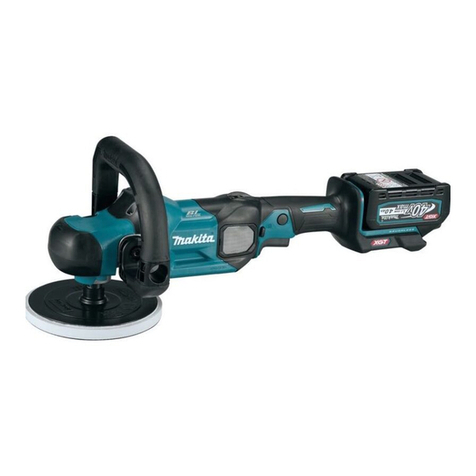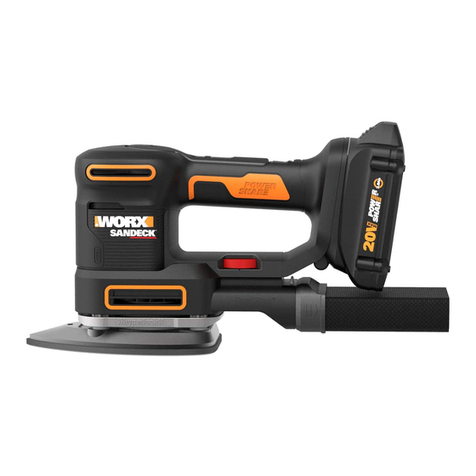Metal Science EASYkleen TEC Brush User manual

Commissioning &
Operation Manual
This document outlines the procedure to
commission the EASYkleen TEC Brush (EKT) and also
an illustrated step by step operation guide

Technical Specifications & Benefits
of the EASYkleen TEC Brush
Electrical Specs
•Input -240v, 50-60Hz
•Output –20-60amps
•NLV - <35VDC
•Duty Cycle - 100%
•Power Source –Transformer Driven
Case and Lead Specs
•Material - High impact structural polymer
•Dimensions - 300mm x 260mm x 130mm
•Weight - 5kgs
•Leads - 8mm² PVC, 10ft in length
Technical Benefits
•Ideal for TIG work
•Highest Corrosion Resistance
•Match any finish (2B to Mirror)
•Perfect for material up to 6mm thick

OH&S
PVC or nitrile gloves
required to be worn
Eye Protection
must be worn.
Use in well ventilated
areas.
Protective clothing
should be worn.
Face protection
can be worn.
Enclosed
footwear at all
times.

Front Panel
Information
ON/OFF
Switch Green
Indicator
Light
Cooling 12V Fans

Side Panels
Information
IEC inlet for mains
power
Primary
Circuit Breaker
Dinse panel mount
(torch handle)
Dinse panel mount
(clamp lead)

1 –How to
commission the
EKT
1.1
Remove unit from
its packaging.
Position unit is its
desired place in
your factory or
workshop.
Place on a bench in
a ventilated work
area.

Attach the provided earth clamp and lead to the (red) dinse
panel mount.
1.2
pic
1.3
Attach the handle and lead to the (black) dinse panel mount

1.4
Attach the power lead to the IEC inlet, then plug in the
power cable into your power source.

1.5
The last step before turning the unit on is to choose your brush.
Simply screw in the desired brush to the torch head.
Express Brush –
The Spot brush is designed for cleaning
spot welds and precision cleaning. Best
used with a heat resistant bristle sleeve
that reduces the splaying of bristles.
Rapid Brush –
Reduces bristle splay when used vertically
and will focus cleaning power on the weld
and HAZ. Use vertically /slight angle. Best
used at 70 degrees to work piece.

2 –Operating the
EKP
2.1
Now that you have the unit commissioned and ready for use, it
is time to begin operation.
To turn machine on, push the on/off switch on top of machine.
Red indicator will light up and fans will start.
Attach the clamp to the work
piece you wish to clean. The
clamp does not need to be
right next to the area being
cleaned, just as long as there
is a good connection.
2.2

2.3 Dip the brush into solution .
Apply the soaked brush to the weld to be cleaned/polished. Use
a smooth motion with minimal pressure for best results.
Dip brush into more solution as needed.

2.4

Then use a neutraliser to neutralise the remaining solution on the
work piece.
Neutraliser about to be sprayed onto cleaned weld
Neutraliser being sprayed onto cleaned weld
The neutraliser when sprayed onto the cleaned weld may bubble
and fizz. This is the neutraliser working to neutralise any left over
weld cleaning solution.
Neutraliser is particularly effective for tight corners.
2.5
pic

Finally using some flowing water, either by a tap, hose or
pressure cleaner to completely wash the work piece down to
remove all residual neutraliser.
Remove residual neutraliser with
running water
Running water removing
neutraliser from work piece
Wipe work piece dry Wipe work piece dry
Using some
paper towel,
wipe work
piece dry.
Work piece has now been cleaned and neutralised. It is now
passive with great corrosion resistance, ready for service.
2.6

Simple Application
Fill acid-proof
container Soak brush in
solution
Apply to
work
Apply
neutraliser
Rinse in clean
water Wipe dry
with clean
cloth

Maintenance
These machines require little maintenance. When used correctly and
maintenance adhered to, the machines will have a very good service life.
Maintenance points –
•Remove brush after each days use (wash brush with water when
storing)
•Wash down clamp after each days use
•Wipe down any residue from handle
•Make sure dinse connector terminals are always clean
Un-cleaned
Clamp with
corrosion
Corroded
Brush

A few general do’s and don’ts –
Do –
•Read and adhere to manual
•Use correct solution and brushes
•Make sure silicone sleeve is always covering the stainless
steel conductor where the brush screws in
•Make sure the silicone aero shield is always attached
•Follow general maintenance points
Don’t –
•Touch the brush when machine is connected to power
supply.
•Touch the brush or unscrew brush immediately after use as
it will be hot
•Touch the work piece near the weld/polished area just after
it has been polished as it will still be hot.
•Use handle parallel or overhead, as solution may run back
down handle
•Wrap or tie brush bristles to stop splaying of the bristles
•Use any other brush or material other than supplied by
Metal Science Technologies (Use of other brushes/material
voids warranty)
Do’s & Don’ts

Troubleshooting
We occasionally have to speak with end users regarding issues that arise.
The vast majority of issues relate to connection, or lack there of.
The first thing to find out is –
When the EKP unit is switched to on, does the red light next to the ON OFF switch
illuminate, and can you hear/feel the fans running?
If the light illuminates and the fans are running but the user is getting no “cleaning
power at the brush”, there is a very good chance that there is a connection issue
somewhere.
These connection issues will most likely be at either the brush or the clamp.
Things to try/test –
•Unscrew brush and check the thread (clean if need to). Screw back in and try
again.
•Have a look at the clamp teeth. Is there a blue build up (copper phosphate)?
This will inhibit connection. Wire brush the teeth, wash with water and try
again. Also check where the cable lug attaches.
•Are the dinse connectors secured correctly? Also check for and
corrosion/debris.
The other issue that may arise (usually first time users) is the user gets a black
stain on their work piece. This is usually because the clamp and handle are around
the wrong way (reverse polarity). The red tagged lead (clamp) must go into the red
tagged dinse panel mount and obviously the brush lead into the other.
Ensure ‘RED’
marked lead
is connected
to ‘RED’
marked
terminal.

8. Material Safety Data Sheet
MATERIAL SAFETY DATA SHEET —16 Sections
SECTION 1 —CHEMICAL PRODUCT AND COMPANY
IDENTIFICATION
Product Identifier
EKP-50 Weld Cleaning Solution (EKP-50-1, EKP-50-5 & EKP-50-20)
Product Use
For use in conjunction with the EASYkleen ranges of weld cleaning machines to remove weld
discolouration
Manufacturer’s Name
Metal Science Technologies Pty Ltd
Supplier’s Name
Metal Science Technologies Pty Ltd
Street Address
43 Shelley Road
Street Address
43 Shelley Road
City
Moruya
Province
NSW
City
Moruya
Province
NSW
Postal Code
2537
Emergency Telephone
0411 217 986
Postal Code
2537
Emergency Telephone
0411 217 986
Date MSDS Prepared
05.01.15
MSDS Prepared By
Metal Science Technologies Pty Ltd
Phone Number
+612 4474 3394
SECTION 2 —COMPOSITION/INFORMATION ON INGREDIENTS
Hazardous Ingredients
(specific)
%
CAS Number
LD50 of Ingredient
(specify species
and route)
LC50 of Ingredient
(specify species)
Phosphoric Acid
< 55
7664-38-2
1530mg/kg Rat
850 mg/kg Rat
Citric Acid
< 5
77-92-9
3000mg/kg Rat
3000mg/kg Rat
Water
< 60
7732-18-5
N/A
N/A
Proprietary Ingredient
< 10
N/A
N/A
N/A
SECTION 3 —HAZARDS IDENTIFICATION
Classification
Hazardous according to Worksafe Australia
Emergency Overview
Clear colorless liquid. Odorless. Will not burn. Can form hazardous decomposition products. Contact with
metals liberates flammable hydrogen gas. Corrosive. Causes skin burns and eye damage.
GHS Classification
Skin corrosion/Irritation –Cat 1B

SECTION 4 —FIRST AID MEASURES
SECTION 5 —FIRE FIGHTING MEASURES
Flammable
No
Means of Extinction
In case of fire in the surroundings, use appropriate extinguishing media.
Flashpoint (°C) and
Method
Not applicable
Upper Flammable Limit (% by
volume)
Not Available
Lower Flammable Limit (% by
volume)
Not Available
Autoignition
Temperature (°C)
Not Applicable
Explosion Data —Sensitivity to
Impact
Not Applicable
Explosion Data —Sensitivity to
Static Discharge Not Applicable
Hazardous Combustion Products
Non-combustible liquid. Will not burn, or support
combustion. Incompatible with oxidising agents, rective metals zinc and bare steel, strong reducing agents,
fluorine, bases, metals, metal oxides, metal alloys, strong bases, sulfur
trioxide, phosphorous pentoxide, and sources of ignition. Fumes produced when heated to
decomposition may include corrosive phosphorous oxides. This product transforms to
pyrophosphoric acid at 200'C.
NFPA
(estimated) Health: 3; Flammability: 0; Instability: 0
SECTION 6 —ACCIDENTAL RELEASE MEASURES
Leak and Spill Procedures
General Information
Use proper personal protective equipment as indicated in Section 8.
Spills/Leaks
Absorb spill with inert material (e.g. vermiculite, sand or earth), then place in suitable container. Avoid
runoff into storm sewers and ditches which lead to waterways. Clean up spills immediately, observing
precautions in the Protective Equipment section. Provide ventilation. Spill may be carefully neutralized
with lime (calcium oxide, CaO).
SECTION 7 —HANDLING AND STORAGE
Handling Procedures and Equipment
Wash thoroughly after handling. Remove contaminated clothing and wash before reuse. Do not get in eyes,
on skin, or on clothing. Keep container tightly closed. Do not ingest or inhale. Use with adequate
ventilation. Discard contaminated shoes.
Storage Requirements
Keep container closed when not in use. Store in a tightly closed container. Store in a cool, dry, well-
ventilated area away from incompatible substances. Keep away from metals. Do not store in metal
containers. Store protected from moisture. Store away from alkalis.
Eye Contact
In case of contact, immediately flush eyes with plenty of water for a t least 15 minutes. Get medical aid
immediately.
Skin Contact
In case of contact, immediately flush skin with plenty of water for at least 15 minutes while removing
contaminated clothing and shoes. Get medical aid immediately. Wash clothing before reuse.
Ingestion
If swallowed, do NOT induce vomiting. Get medical aid immediately. If victim is fully conscious, give a
cupful of water. Never give anything by mouth to an unconscious person.
Inhalation
If inhaled, remove to fresh air. If not breathing, give artificial respiration. If breathing is difficult, give
oxygen. Get medical aid.
This manual suits for next models
2
Table of contents
Popular Sander manuals by other brands

Black & Decker
Black & Decker BDEMS200 instruction manual

Chicago Pneumatic
Chicago Pneumatic CP3070-120G Operator's manual
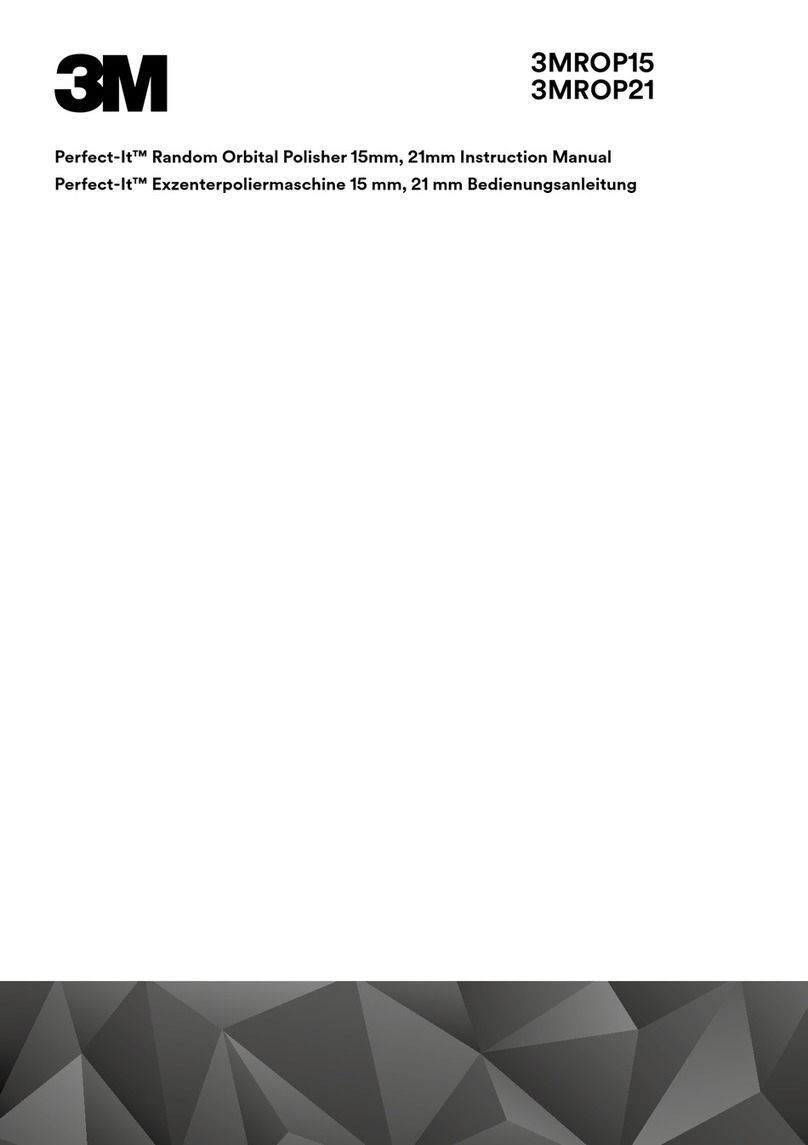
3M
3M Perfect-It 3MROP15 instruction manual

Certa
Certa CTVSORBWAXA user guide
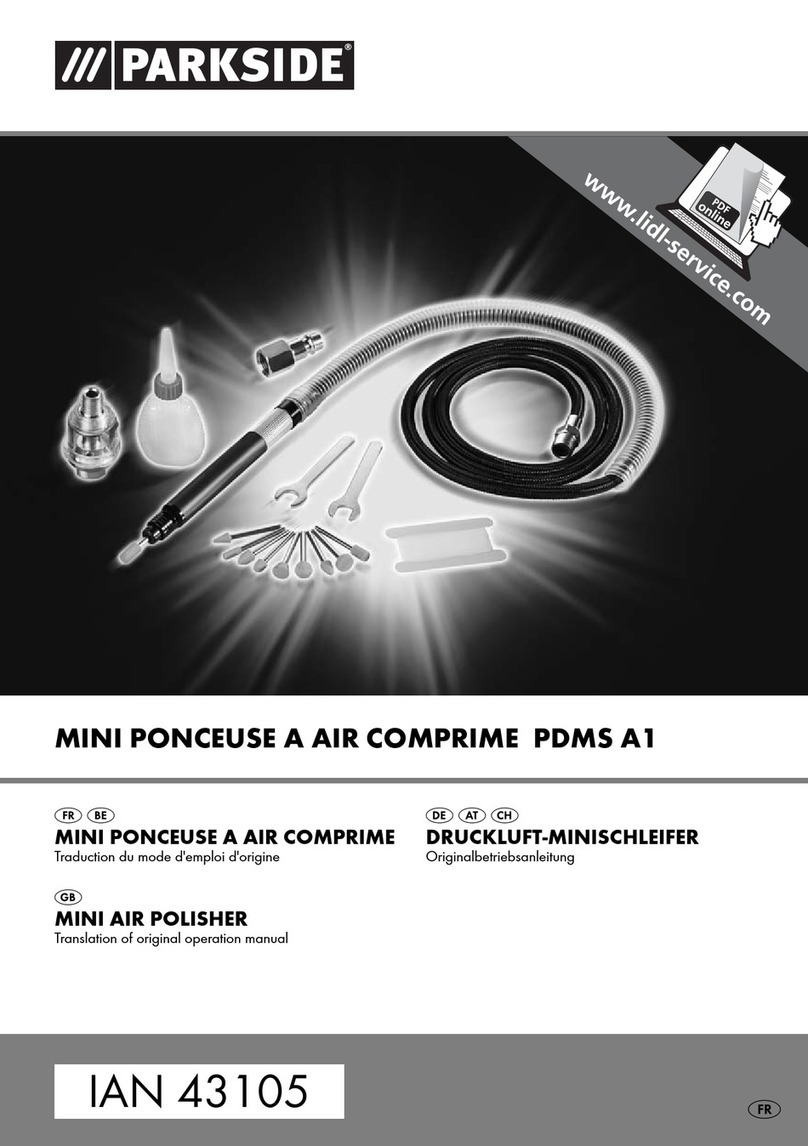
Parkside
Parkside PDMS A1 translation of original operation manual
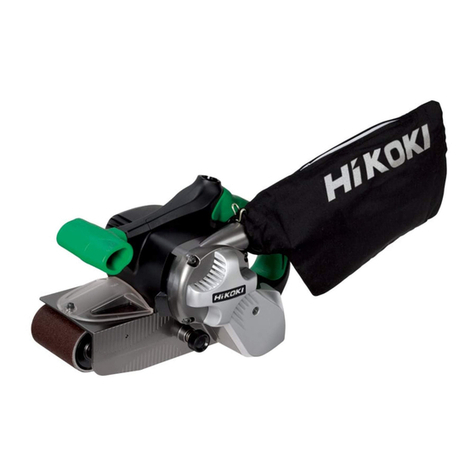
HIKOKI
HIKOKI SB 8V2 Handling instructions
